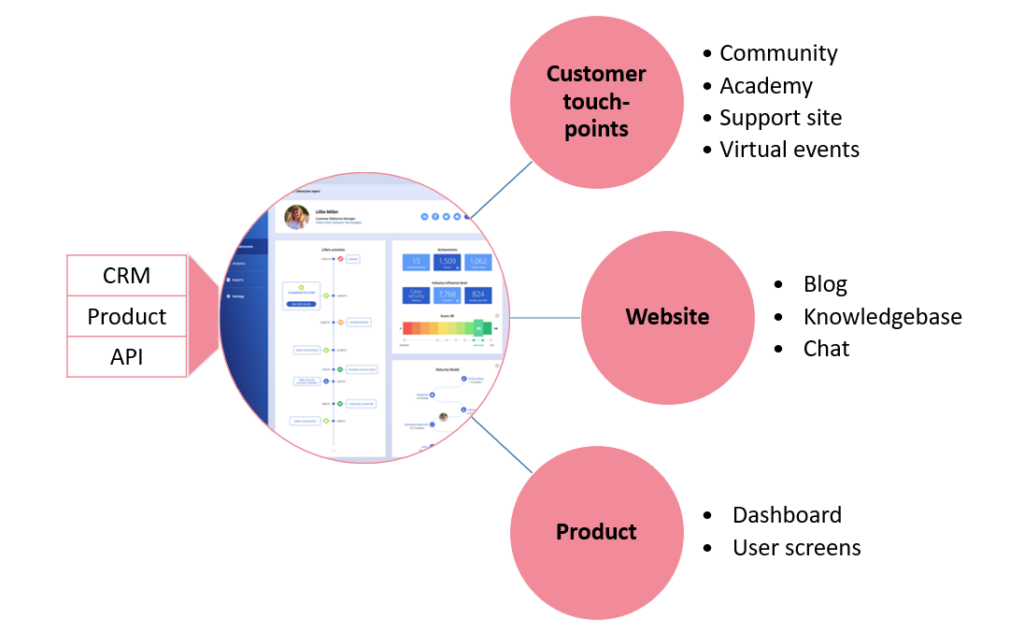Home » The Customer Led Growth Blog » Integrated Advocacy: Unleashing the potential of ungated customer advocacy
Integrated Advocacy: Unleashing the potential of ungated customer advocacy

Integrated Advocacy: Unleashing the potential of ungated customer advocacy
Heads up. You’re not as special as you used to be.
You’ve been selected to join our exclusive customer advocacy program!
Sound familiar? If you hold a corporate role, chances are increasing that you’ve received a message like this from a B2B vendor. While customer advocacy programs were formerly a rare and novel treat back in the pioneering days of programs such as Microsoft MVP (a revolutionary program when launched in 1993), they’re no longer the singular opportunity they used to be. In fact the last known report on this topic done by IDC in 2017 says that 67% of B2B businesses have a customer advocacy program in place. Not to mention the heavy increase in Hail Mary customer engagement efforts due to long-lasting lock-downs.
This means customer advocacy programs are becoming less of a unique selling point and more of an expectation for today’s B2B buyers.
It’s quite possible that teams across your organization are now competing for membership in your customer advocacy program, whether it be a customer advisory board, champions community, reference program, referral program, beta program or all of the above.
Which forces us to ask: Once customer advocacy programs become so common as to be an expectation, how available will your most sought after members be, as they are courted by multiple vendors to engage in a growing range of advocacy activities?
As B2B advocacy programs are on the rise, we can look at our cousins in consumer customer loyalty programs to get a glimpse of what possible oncoming program overload might look like. According to Clarus Commerce, “Consumers belong to an average of 14.8 loyalty programs.” That doesn’t seem like too much of a stretch if you look at your list of phone apps and loyalty cards, am I right? In fact, it’s become almost an expectation that most restaurants and retailers will have some kind of loyalty and rewards program. But (and this is a big “but”, so pay attention), the report goes on to say that “[customers] are active in only 6.7 of them,” which results in “54% of loyalty memberships being inactive.” Starting to sound familiar?
Oh no! Does this mean my customer advocacy program will fail?!
Of course not. If you’ve been in this practice for any length of time, you’ve certainly experienced the amazing results of a thoughtful and well-executed customer advocacy strategy, such as customer proof points accelerating sales cycles, customer generated content allowing your brand to stand out, customer expertise enhancing the success of others adopting your product, and on and on the advantages go.
But, what you also know – if you have some experience in customer programs – is that recruitment can be an ongoing quest, and don’t even get me started on consistent engagement! What we can anticipate is enticing program membership and ongoing participation will become an increasingly challenging and competitive task as more organizations continue to realize the amazing benefits of customer advocacy programs and double down their investments in them.
So, what’s a customer marketer to do?
Good question. There’s no doubt the practice of customer advocacy is evolving – making its way from back-office afterthought to golden goose of the executive team. But, as the practice quickly evolves, so too must our approach.
In this post, we are going to focus on one prevalent aspect of typical customer advocacy programs: Gating.
Almost always, customer advocacy programs require registration to unlock a distinct member experience. This makes sense. It’s how we know who to target with relevant opportunities, how we build tribes with select groups, how we create some element of exclusivity and how we control the overall experience and environment of participants.
Some typical aspects of gated advocacy programs include:
- Hand-selected and invited participants
- Gated engagement through program membership
- Labeling members as advocates, champions or similar term
- Program ownership by a singular department and limited cross-collaboration
- Increasingly, a dedicated environment to log into and
- An “advocacy” journey for participants that is unique to the program itself
Membership-driven customer programs should absolutely live on as they drive unique goodness for the organization and the customer member alike. But, as we see the number of B2B advocacy programs continue to swell, engaging customers with the aspects listed above may become increasingly more competitive.
Get your pencils ready. Here comes the good stuff.
The great news is advocacy can happen anywhere and live comfortably outside the confines of any membership-driven program. Even members who ignore your program invites, are already saturated with online logins and program memberships, or don’t consider themselves “card carrying advocates” can participate in meaningful ways on behalf of your brand.
It’s time to think beyond typical customer advocacy programs by designing integrated advocacy .
Integrated advocacy happens when you map advocacy-related engagement to “opportune moments” in the customer journey, creating interactions that are designed to enhance the customer experience and give them access to ungated and unlabeled advocacy activities in the right place, at the right time.
Some aspects of integrated advocacy are:
- Meeting customers in the channels in which they already engage rather than relying on them coming to a designated point of engagement
- Relationship building and advocacy activities directly aligned to the existing customer journey for higher relevance and a more seamless experience
- Ungated engagement opportunities outside the confines of formal program membership
- Program-type activities without the need to ascribe to the “advocate” label
- High levels of internal collaboration to design advocacy engagement around touchpoints and channels owned by different departments
Where should I integrate advocacy in the customer journey?
I’m glad you asked. I mentioned “opportune moments”, which are important points in the journey that have the potential to enhance or diminish the customer’s overall perception of and loyalty to your brand. These are instances wherein a customer’s opinion about your brand is formed, in some cases forever. They can be positive or negative, depending on whether you as an organization exceed or do not meet expectations.
For example, this could be a change in CSM, contract renewal, a change in service level, a bad support experience, a poor product feature rollout or reaching a product adoption milestone. These moments are ripe for either building delight with your customer or engaging them in advocacy activities.
With an integrated advocacy strategy in place, the opportune moment, channel and touchpoint are determined by an experience that can occur at any point in the customer journey, anywhere across the organization. Mapping out engagement flows that go beyond a single automated response allow you to infuse customer nurture and activation into any given milestone.

This approach will increase the impact and outcomes of your customer advocacy program and , modern advocacy pioneers should consider how customer nurture and activation can be integrated throughout the customer journey, free of the confines of program membership.
Sounds super smart, but how do I get started?
Start small. Integrated advocacy takes detailed engagement mapping, lots of cross-team collaboration and most often use of multiple technologies. Many customer advocacy professionals can get overwhelmed thinking about ungated engagement.
- Pick two or three opportune moments in the customer journey that are the most accessible and have the potential for quick results
- Begin mapping how you can leverage that moment to build loyalty or activate customers by presenting the right opportunity to the right person at the right moment.
- Meet with cross-departmental stakeholders to determine the best way to collaborate and agree on what success looks like
- Determine the necessary technologies that allow you to meet your customer where they are at and operationalize your customer engagement flows
- Measure the impact of your integrated advocacy efforts and iterate as you go
The future of B2B customer marketing and advocacy is bright. Allow yourself to think beyond the expected and traditional forms of customer advocacy program design to create a seamless experience for your customers that meets them where they are at and unlocks the gates of opportunity – for your business and their careers.
Clarus Blog – https://www.claruscommerce.com/blog/17-staggering-customer-loyalty-stats-that-will-change-your-perspective/
If you’re either already running or planning to roll out your advocacy program, what’s one thing this article may have inspired you to explore to unlock the value of a more integrated effort for your organization? Let us know in the comments below or get in touch! We are always happy to learn from the field.

